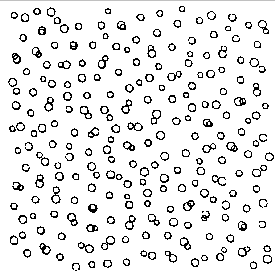Ceramic composition and properties atomic and molecular nature of ceramic materials and their resulting characteristics and performance in industrial applications.
Property shared between glass and ceramics.
Glass ceramics are polycrystalline materials produced through controlled crystallization of base glass.
In these experiments 2 g of grained samples with particle size between 0 3 and 0 5 mm were treated at 373 k for 2 h in 70 ml solutions.
Glass ceramics combine the properties of glasses with the benefits of conventional sintered ceramics.
A glass kiln will have heating elements on the top whereas a ceramic kiln will have heating elements on the sides.
80 83 85 in order to prevent coating cracking due to the thermal coefficient mismatch between the glass coating and the ceramic.
Enameling was used to coat zirconia and alumina with bioactive phosphosilicate glass and glass ceramics ap40 and rkkp with composition in the system sio 2 β ca 3 po 4 2 cao na 2 o k 2 o mgo caf 2.
Ceramics may be crystalline or partly crystalline.
The glass partially crystallises.
In the manufacture of both glass and ceramics there is a slight difference.
Ceramics and glass have many applications that require qualities such as hardness rigidity high resistance to heat corrosion etc.
The key difference between glass and ceramic is that ceramics have crystalline or semi crystalline or non crystalline atomic structure whereas the atomic structure of glass is non crystalline.
The chemical resistances of the glass glass ceramic and ceramic materials were estimated in 10 hno 3 and 10 naoh solutions.
Materials that are initially fabricated as glasses and perhaps shaped using glass moulding techniques and converted to a ceramic to enhance their properties are called glass ceramics.
Glass is known to be non crystalline.
The table below provides a summary of the main properties of ceramics and glass.
Amorphous structure means that atoms are not organized according to a well ordered repeating arrangement as in crystals.
A well known example of a glass ceramic is the ceramic cooker hob which has been developed to have a thermal expansion coefficient close to zero.
Industrial ceramics are commonly understood to be all industrially used materials that are inorganic nonmetallic solids.
Glass can be called as a type of ceramic.
This treatment results in a controlled nucleation and crystallisation of the glass.
We use a vast range of ceramic materials in the day to day life.
Most commonly they are manufactured in a process in which a pre manufactured glass is subjected to a specific heat treatment.










